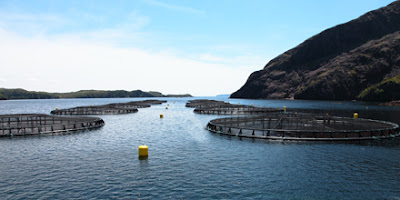We finally had a chance to compile the final numbers on our spring batch of chickens, so we wanted to put the numbers out there in case anyone besides us would find this kind of stuff useful. Be forewarned: this is a data-heavy post!
Heres the pretext: we got 27 chickens from McMurray Hatchery on May 5. The box of fluff that arrived in the mail contained 10 Cornish Cross Roasters (the slightly slower-growing version of the Cornish Cross), 9 Pioneers, and 8 Eggers. For the Eggers, we ordered a Red Star, a Rhode Island Red, a New Hampshire Red, a Columbian Wyandotte, a Black Star, and an Easter Egger; two free rare breed "mystery chicks" came along as stowaways, which weve now figured out are a Silver Leghorn rooster and probably another Easter Egger.
We had to cull one of the Pioneers at eight weeks, so we were left with 18 meat chickens. We found a new source of organic feed, which, combined with the better conversion ratio of the Roasters, brought our cost of production down quite a bit from where it was in the fall. We didnt keep the meaters and the eggers separate, so we had to make some assumptions about how much of feed they consumed. After about three weeks, the Eggers made up about 15% of the total chicken weight, so we assumed they were eating 15% of the food. In reality, they probably ate less than that. But with that assumption, the final price came out to $4.93/lb, or $2.12/lb (30%) less than in the fall. Considering how excited Katie gets about a 30% off coupon at Kohls, this chicken should make her positively ecstatic! Heres the breakdown:

For what its worth, changing the assumption of feed consumption from 85% to 95% increases the price to $5.35/lb, so still quite a bit better than our fall batch. Comparing to the fall, we also benefited from cheaper chicks ($2.38/each vs. $3.77/ea) and warmer temps (less electricity for the heat lamp). Had we been lucky enough to be able to process the chickens in our own backyard, hatch them from our own eggs, and realize that hardware stores also sell grit, but in 50 lb bags (aka, construction sand), we could have cut our costs to a best-case scenario of $3.71/lb. We had both the Roasters and Pioneers on pasture (in a tractor) for multiple weeks at a time and increased the ratio of kitchen scraps (and bathroom spiders) in their diet toward the end, but clearly the main cost driver is the feed. Well be embarking on a mission shortly to decrease the feed costs by growing much of our own protein, so stay tuned!
The other interesting thing about raising multiple types of birds side-by-side is a final weight and growth-rate comparison. The Cornish Cross is far and away the fastest growing breed, but we were curious...how much heavier are they than other meat breeds? And just
how fast do they grow? We butchered at about 10.5 weeks, and the roasters ranged from 7.7 to >11 lbs (the top bird maxed out the scale). The Pioneers were between 4 and 5.7 lbs, which was less than the Rangers we had in the fall (despite McMurrays claim that the Pioneers grow faster and get larger. Maybe next time well grow the Pioneers and Rangers side-by-side and see what happens). But for the Cornish Cross, apparently you have to butcher them before 11 weeks or they start to gobble.

From the graph above, its clear the growth curves were pretty linear for both breeds, meaning that they would have probably gotten a little bigger if we waited even longer. But its also interesting to compare these two breeds to the Eggers, just for fun. The Eggers grew, on average, 17 grams per day. That number is skewed a little by one of the Easter Eggers, which hung tough with the Pioneers, the hefty girl. Even now, shes the only one who cant fully fly up to the roost! The Pioneers were almost twice that growth rate, at 33 grams per day, on average. And the Roasters were nearly twice that again! Holy smokes!

One other thing we wanted to mention was the health of the Roasters. They are like the standard Cornish Cross in that they are thoroughly disgusting birds, apparently living solely to eat and poop. Theyre dirty and poopy, but they grow fast. So fast, in fact, that the high growth rate can cause problems if they get too old, or at high elevations (we live at about 5,600 feet, which counts as "high"). We took a chance on the fact that McMurray recommends against the standard Cornish Cross at elevations about 5,000 feet, but had no such warning for the slightly slower-growing Cornish Cross Roasters. We had multiple days over 90 °F toward the later weeks, and lost nary a bird. Keeping them outside nearly the whole time certainly helped, but were happy to report that our batch did fine up to 10.5 weeks in high elevations and high temperatures.
So, there you have it! A breakdown of our spring 2014 chicken experience. How do our chickens compare to yours? Any questions you have that we didnt address in the post? Let us know in the comments section below!

















































